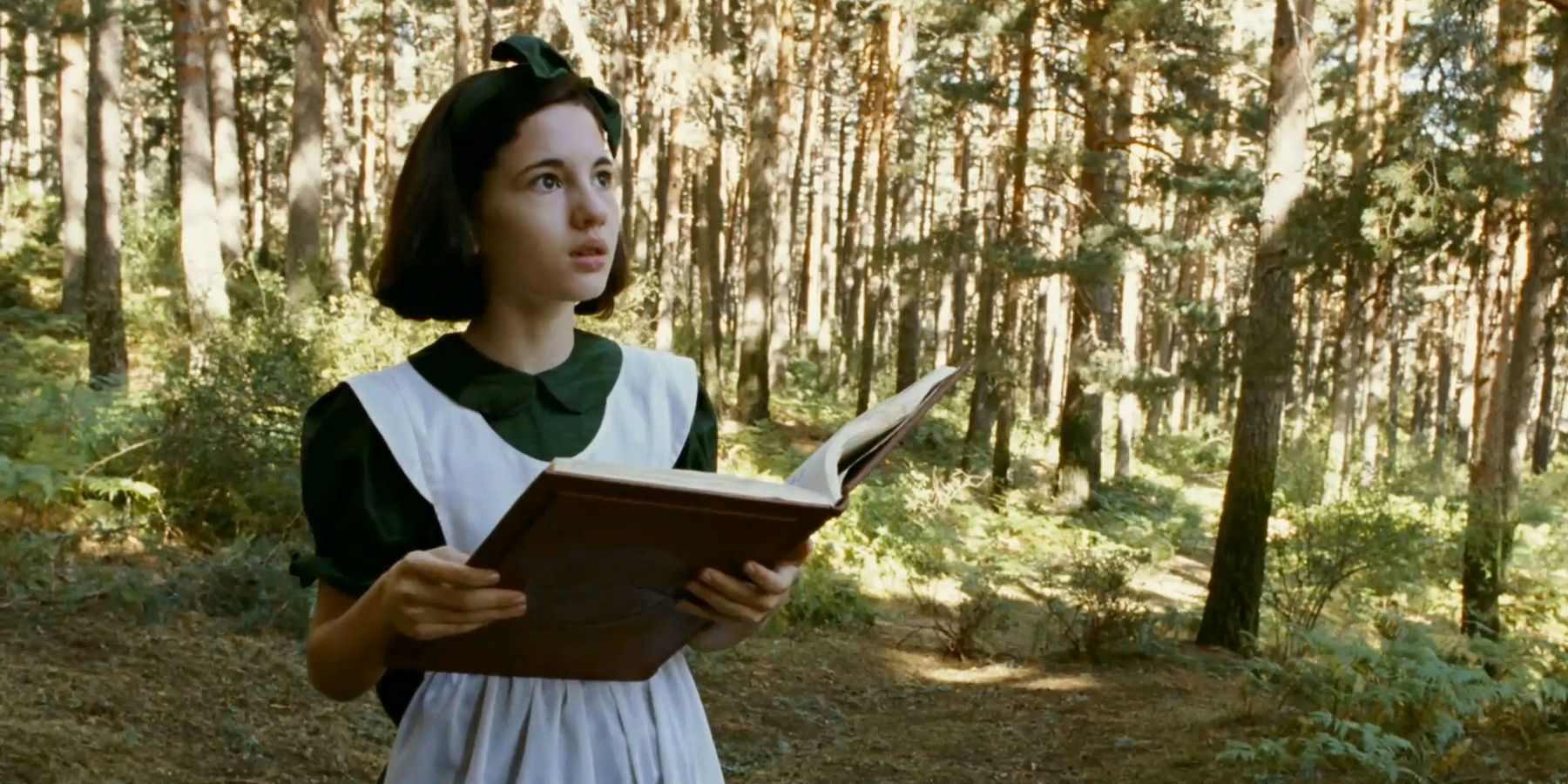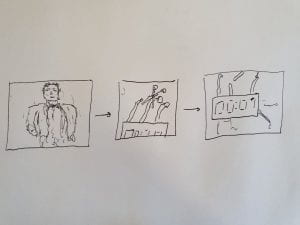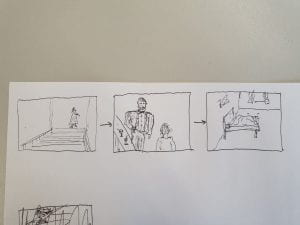Shared class analysis of the superhero genre, focusing on three typical examples of the superhero corpus:
Film 1: Superman (1978) Donner
Film 2: Spider-man (2002) Raimi
Film 3: Wonder Woman (2017) Jenkins
Generic Conventions: |
|||
| Typical Locations | American Cities (New York): tall buildings provide the perfect ‘playground’ for large scale action scenes involving flight and destruction. Also, cities are culturally dense, and highly concentrated hubs of society; every class is represented as we move from the workers on the streets, up to the businessmen in their skyscrapers. Hence they can be used to represent an entire country’s flaws or strengths, linking to the historical purpose of superheroes being beacons of hope, who aid in uniting humanity. | ||
| Characters / Groups | 1 : Hero in a disguise – Clark Kent – Superman, Peter Parker- Spiderman, Regular woman – Wonderwoman)
2: Love Interest – Clark Kent – Lois Lane, Peter Parker – Mary Jane, Wonder Woman – Steve Trevor 3: Villain – Hostages, Destroy buildings, Kill high ranking peeps, want for money & power, worldly possessions – Superman – Lex Luther, Spider-man – Dr, Octopus – Green Goblin – Mr Negative – Penguin – Rhino – Sandman – Venom, Wonder Woman – Germans – Ares. |
||
| Conflicts & Themes | Super Villain attempting to cause a world changing event with a superhero attempting to stop it. Villain finds a way to control the hero’s power or gets some sort of weapon. Love interest gets involved. Some sort of learning their power or trying to deal with it as well as their normal life. Tries to convey being pure and that anyone can be a hero and teamwork. Achilles heel. | ||
| Filmic Technique | E P I C !!!
Triumph! Glory! High energy, tense, action sequences, Dramatic stunts, fast moving camera shots, big, wide angles to show the size of the situation that they are in, Scale, Intense music, typical lowkey lighting for scenes with villains and light/bold/bright colour palette for the heroes, lots of camera tracking |
||
| Iconography / Mise-en-Scene | Costumes – Superhero logo on the costumes, suits usually with armour and protection, mask to cover up identity
Props – Gadget/weapon unique to the superhero eg Cpt America has a shield. Lighting – Low key when there is conflict Setting – In a large city Makeup – facepaint for Joker |
||
| Shape of the story | Act 1
The hero arrives / is born in a dire situation. An orphan. Extraordinary powers revealed. The villain emerges. The hero is scorned / shunned |
Act 2
The hero explores their powers and tries to fix the world. They often meet & fall in love – which in some ways is forbidden to the, The villain moves his plans forward towards a crisis. |
Act 3
The final showdown. The hero is given an impossible choice often between their love and the fate of the world. With one enormous effort they manage to defeat the enemy. |







 Another generic convention, which is especially apparent in the James Bond franchise, is the seduction of females by the main character, often to exploit them to receive information. Whilst these scenes do make for some iconic one-liners, modern audiences now rightfully demand more sophisticated roles for women. Christopher Nolan’s most recent film, ‘TENET,’ plays on all of the Spy genre stereotypes wonderfully, and uses the audience’s expectations of them as a manipulative tool. For example, after seducing a girl, James Bond will often later fall for them. This same series of events is featured in, ‘TENET,’ between the protagonist and the character of Kat, however, rather than a shallow sexual relationship forming, a much more complex conncetion of respect, and even friendship is developed, friendship being a key theme of the movie. Furthermore, when the protagonist ‘reverse bungee jumps’ into the house of a wealthy arms dealer, he, and with him the audience, instantly assume that the man the protagonist encounters is the arms dealer, when in fact the real arms dealer is the character of Priya, who we mistook to be a simple housewife. This establishes the idea that we should not underestimate Priya, and that despite her gentle motherly appearance and tone she is far from gentle. Of course, the audience and the protagonist quickly forget this warning, until it’s far too late because perhaps we still can’t quite fathom the idea of a woman being an intelligent and ‘evil’ protagonist.
Another generic convention, which is especially apparent in the James Bond franchise, is the seduction of females by the main character, often to exploit them to receive information. Whilst these scenes do make for some iconic one-liners, modern audiences now rightfully demand more sophisticated roles for women. Christopher Nolan’s most recent film, ‘TENET,’ plays on all of the Spy genre stereotypes wonderfully, and uses the audience’s expectations of them as a manipulative tool. For example, after seducing a girl, James Bond will often later fall for them. This same series of events is featured in, ‘TENET,’ between the protagonist and the character of Kat, however, rather than a shallow sexual relationship forming, a much more complex conncetion of respect, and even friendship is developed, friendship being a key theme of the movie. Furthermore, when the protagonist ‘reverse bungee jumps’ into the house of a wealthy arms dealer, he, and with him the audience, instantly assume that the man the protagonist encounters is the arms dealer, when in fact the real arms dealer is the character of Priya, who we mistook to be a simple housewife. This establishes the idea that we should not underestimate Priya, and that despite her gentle motherly appearance and tone she is far from gentle. Of course, the audience and the protagonist quickly forget this warning, until it’s far too late because perhaps we still can’t quite fathom the idea of a woman being an intelligent and ‘evil’ protagonist.